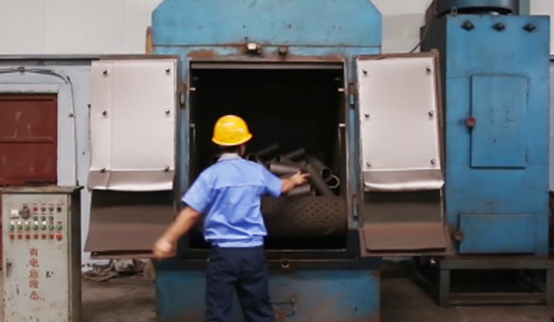 Afrikaans
Afrikaans  Albanian
Albanian  Amharic
Amharic  Arabic
Arabic  Armenian
Armenian  Azerbaijani
Azerbaijani  Basque
Basque  Belarusian
Belarusian  Bengali
Bengali  Bosnian
Bosnian  Bulgarian
Bulgarian  Catalan
Catalan  Cebuano
Cebuano  Corsican
Corsican  Croatian
Croatian  Czech
Czech  Danish
Danish  Dutch
Dutch  English
English  Esperanto
Esperanto  Estonian
Estonian  Finnish
Finnish  French
French  Frisian
Frisian  Galician
Galician  Georgian
Georgian  German
German  Greek
Greek  Gujarati
Gujarati  Haitian Creole
Haitian Creole  hausa
hausa  hawaiian
hawaiian  Hebrew
Hebrew  Hindi
Hindi  Miao
Miao  Hungarian
Hungarian  Icelandic
Icelandic  igbo
igbo  Indonesian
Indonesian  irish
irish  Italian
Italian  Japanese
Japanese  Javanese
Javanese  Kannada
Kannada  kazakh
kazakh  Khmer
Khmer  Rwandese
Rwandese  Korean
Korean  Kurdish
Kurdish  Kyrgyz
Kyrgyz  Lao
Lao  Latin
Latin  Latvian
Latvian  Lithuanian
Lithuanian  Luxembourgish
Luxembourgish  Macedonian
Macedonian  Malgashi
Malgashi  Malay
Malay  Malayalam
Malayalam  Maltese
Maltese  Maori
Maori  Marathi
Marathi  Mongolian
Mongolian  Myanmar
Myanmar  Nepali
Nepali  Norwegian
Norwegian  Norwegian
Norwegian  Occitan
Occitan  Pashto
Pashto  Persian
Persian  Polish
Polish  Portuguese
Portuguese  Punjabi
Punjabi  Romanian
Romanian  Russian
Russian  Samoan
Samoan  Scottish Gaelic
Scottish Gaelic  Serbian
Serbian  Sesotho
Sesotho  Shona
Shona  Sindhi
Sindhi  Sinhala
Sinhala  Slovak
Slovak  Slovenian
Slovenian  Somali
Somali  Spanish
Spanish  Sundanese
Sundanese  Swahili
Swahili  Swedish
Swedish  Tagalog
Tagalog  Tajik
Tajik  Tamil
Tamil  Tatar
Tatar  Telugu
Telugu  Thai
Thai  Turkish
Turkish  Turkmen
Turkmen  Ukrainian
Ukrainian  Urdu
Urdu  Uighur
Uighur  Uzbek
Uzbek  Vietnamese
Vietnamese  Welsh
Welsh  Bantu
Bantu  Yiddish
Yiddish  Yoruba
Yoruba  Zulu
Zulu types of conveyor belt pulleys
Types of Conveyor Belt Pulleys
Conveyor belts are essential components in various industries, facilitating the movement of materials from one point to another with efficiency and ease. A critical part of the conveyor system is the pulley, which plays a vital role in the operational effectiveness of a conveyor belt. Understanding the different types of conveyor belt pulleys is crucial for selecting the right one for specific applications.
1. Drive Pulley Drive pulleys are the primary component responsible for powering the conveyor belt. They are typically located at the head or discharge end of the conveyor system. When the drive pulley rotates, it pulls the belt along, allowing materials to be moved from the input to the output point. Drive pulleys often come with various surface textures, such as rubber or steel, to provide the necessary friction for movement.
2. Idler Pulley Idler pulleys, found throughout a conveyor system, support the belt without providing power. They help maintain the belt's tension and alignment, ensuring it runs smoothly. Idler pulleys can be configured in different ways, including flat, trough, or impact designs, depending on the material being transported and the specific operational requirements.
3. Tail Pulley As the name suggests, tail pulleys are located at the opposite end of the drive pulleys. Their primary role is to support the return part of the conveyor belt. Tail pulleys help to maintain proper tension in the system, preventing slack that could lead to belt misalignment or wear. They also contribute to belt tracking, ensuring that the belt remains centered during operation.
types of conveyor belt pulleys

4. Snub Pulley Snub pulleys are used to increase the wrap angle around the drive pulley. This enhanced contact between the belt and the drive pulley improves friction and, subsequently, the efficiency of power transmission. Snub pulleys are particularly useful in situations where additional grip is needed without increasing the size of the drive pulley.
5. Return Pulley Return pulleys are found on the underside of the conveyor belt. Their purpose is to guide the belt back to the drive pulley after the material has been discharged. Return pulleys help minimize wear on the belt and contribute to the overall efficiency of the system.
6. Wing Pulley Wing pulleys are designed with a unique, winged shape that helps to reduce material buildup on the pulley surface. This design enhances efficiency and minimizes maintenance by preventing clogging, making them ideal for transferring loose or bulk materials.
In conclusion, understanding the types of conveyor belt pulleys is essential for optimizing conveyor systems in various industries. Each type of pulley serves a specific purpose, from driving and supporting to guiding the belt, thus ensuring the efficient transport of materials. Selecting the right pulleys can lead to increased operational efficiency and reduced maintenance costs, making them a vital consideration in conveyor design and application.
-
Revolutionizing Conveyor Reliability with Advanced Rubber Lagging PulleysNewsJul.22,2025
-
Powering Precision and Durability with Expert Manufacturers of Conveyor ComponentsNewsJul.22,2025
-
Optimizing Conveyor Systems with Advanced Conveyor AccessoriesNewsJul.22,2025
-
Maximize Conveyor Efficiency with Quality Conveyor Idler PulleysNewsJul.22,2025
-
Future-Proof Your Conveyor System with High-Performance Polyurethane RollerNewsJul.22,2025
-
Driving Efficiency Forward with Quality Idlers and RollersNewsJul.22,2025





























